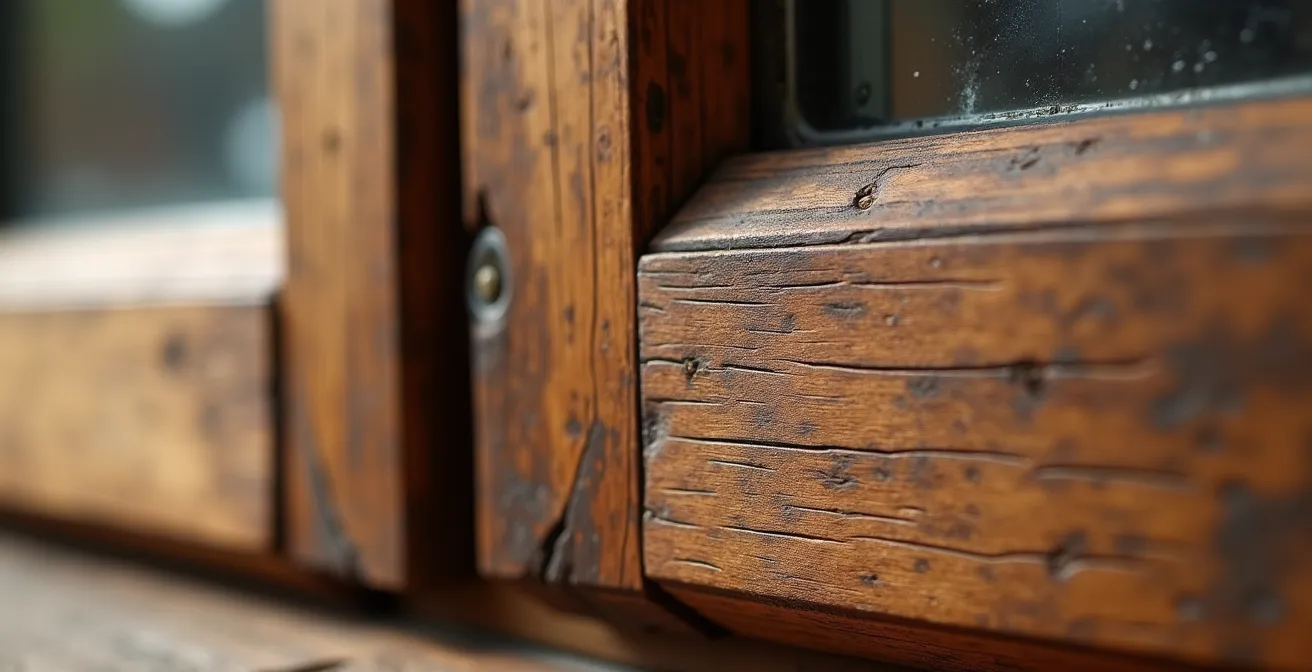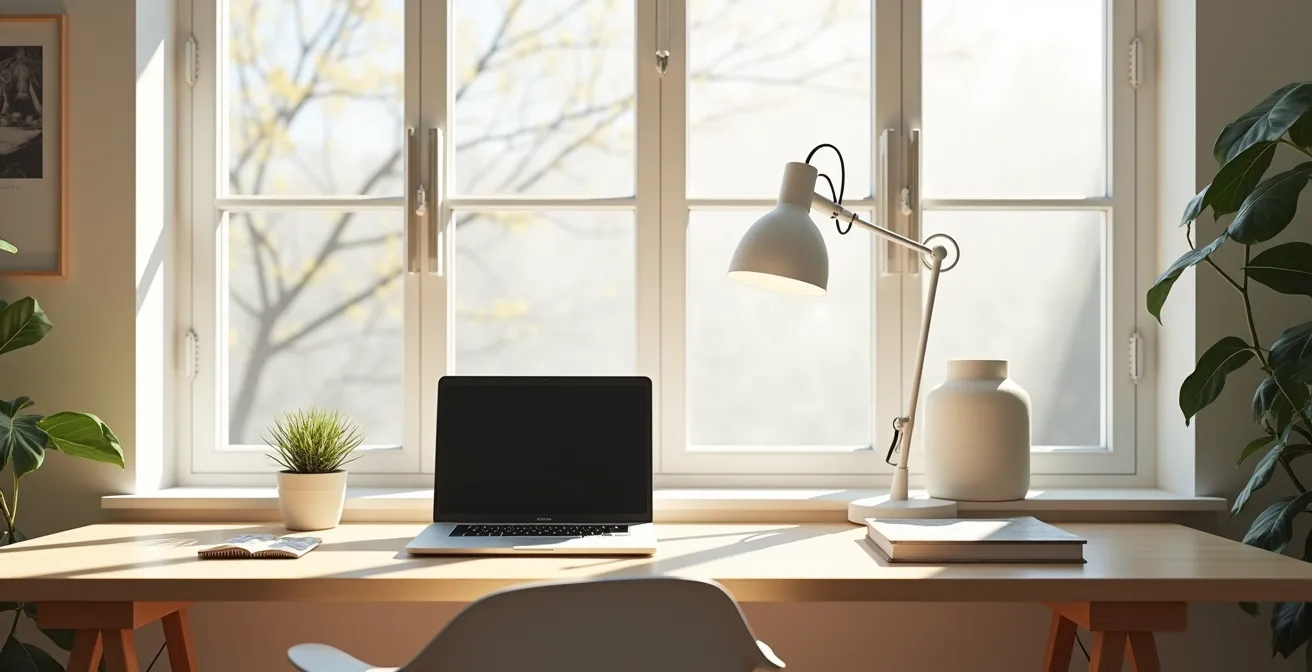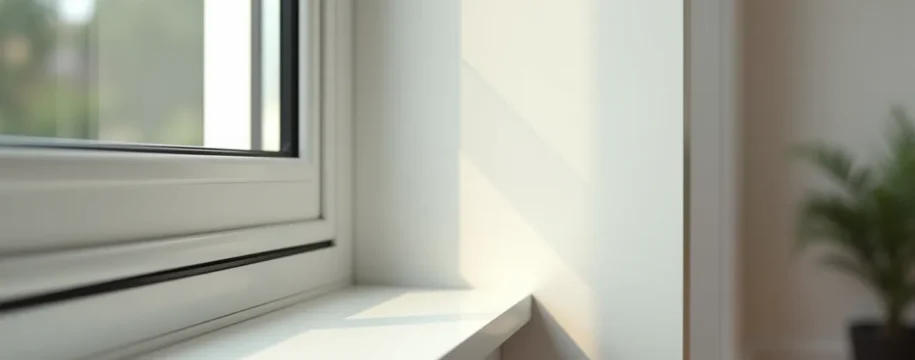The conventional wisdom is clear: new, energy-efficient windows are a no-brainer investment that boosts your home's value and slashes your utility bills. But what if this advice, repeated by contractors and DIY blogs alike, is an oversimplification? The financial reality is far more nuanced. Simply installing new units doesn't guarantee a positive return; in some cases, it's a significant financial misstep.
The true return on investment (ROI) isn't a fixed number. It’s a complex calculation that hinges on a trio of often-overlooked variables: your specific climate, your personal ownership timeline, and the hidden, compounding costs of inaction. Before committing thousands of dollars, it's crucial to move beyond generic promises and analyze if selecting the right window solutions on this link is the correct move for your unique financial situation.
Your Window ROI Blueprint
- Identify scenarios where upgrading is a guaranteed net loss, like in mild climates or for short-term homeowners.
- Use a clear formula to calculate your personal break-even point based on ownership duration.
- Understand the difference between a home's appraisal value and its "marketability" boost from new windows.
- Factor in the "invisible" costs of keeping old, failing windows to see the full financial picture.
Pinpointing the scenarios where upgrading is a financial mistake
Before calculating potential gains, the first step is to identify the red flags—situations where the high upfront cost of window replacement has little chance of paying for itself. These are financial traps where the promised energy savings and value bump are either minimal or actively detrimental.
When is replacing windows a bad idea?
Replacing windows is often a poor financial decision if you live in a mild climate, own a historic home where original windows add value, or plan to sell the property in less than three years.
One of the most significant factors is your location. In regions with extreme hot or cold seasons, the energy savings from new windows can be substantial. However, in the "Climate ROI Dead Zone"—areas with mild year-round temperatures—the energy savings are so marginal that it takes 30 years to break even on window replacement costs. The initial investment simply can't be justified by a few dollars saved on heating or cooling each month.
Another major pitfall is the historic home. For these properties, the original windows are often a key architectural feature, built from high-quality, old-growth wood that is now irreplaceable. Replacing them can diminish the home's character and, consequently, its market value.

In these cases, professional restoration is often the superior financial and aesthetic choice. Restored original windows can perform nearly as well as new ones with proper weatherstripping and storm windows, all while preserving the home's unique charm and value.
Historic home window replacement value impact
A homeowner with a 1920s Colonial Revival home received a $72,000 window replacement estimate. Window restoration expert Alison Hardy calculated that with promised 40% energy savings, it would take nearly four decades to offset replacement costs. The existing 100-year-old windows made from irreplaceable old-growth lumber could be restored for approximately professional window reglazing costs approximately $1,000 per window and last another 100+ years, while new vinyl windows typically last only 10-25 years. For this historic property, restoration preserved both value and architectural integrity while avoiding a net financial loss.
Finally, your ownership timeline is critical. If you plan to sell your home in the near future (under 3 years), upgrading your windows is almost always a net financial loss. The transaction costs of selling, combined with the fact that you won't recoup 100% of the project cost in the sale price, means you won't have enough time to benefit from the cumulative energy savings needed to break even.
| Ownership Timeline | Payback Period | Equity Enhancement | Financial Outcome |
|---|---|---|---|
| Short-term (under 3 years) | 5-8 years average | 70-85% of project cost | Net loss without full payback |
| Mid-term (5-7 years) | Partial payback | 67-76% recovery at resale | Break-even or modest gain |
| Long-term (15+ years) | Full payback achieved | 70-85% at resale + cumulative savings | Positive ROI from energy savings |
Your ownership timeline: the key to calculating true ROI
Your timeline as a homeowner is the single most important variable in the ROI equation. The financial benefit of new windows shifts dramatically depending on whether you're in a "starter home" you'll leave in five years or a "forever home" where you'll stay for decades. To make an informed decision, you need a clear way to calculate your personal break-even point.
Break-even calculation formula for window replacement
- Step 1: Calculate net cost by subtracting estimated resale value recovery (typically 80% of original window cost) from total project cost
- Step 2: Determine annual energy savings by multiplying your current yearly energy bill by 15% (standard window replacement savings rate)
- Step 3: Divide net cost by annual energy savings to determine break-even period in years
- Step 4: If financing, add total interest paid over loan term to net cost before dividing by annual savings to get adjusted payback period
For a "Forever Home" owner (15+ years), the ROI is primarily driven by cumulative energy savings. Over two decades, even modest annual savings add up to a significant sum, eventually surpassing the initial installation cost. According to the Department of Energy, replacing old windows with ENERGY STAR certified models can save between $71 and $501 annually on energy bills, which makes a substantial difference over the long term.
Conversely, for a "Starter Home" owner (5-7 years), the ROI is dominated by the immediate uplift in property value at resale. Since you won't be in the home long enough to achieve full payback from energy savings, your primary concern is how much of the project cost you can recoup when you sell. Factoring in all these costs is a core part of understanding home building expenses and renovation returns.
| Scenario | Years in Home | Cumulative Energy Savings | Resale Value Recovery | Total ROI |
|---|---|---|---|---|
| Starter Home Owner | 5-7 years | $500-$1,500 | 67-76% | Break-even to slight loss |
| Mid-term Homeowner | 10-12 years | $1,500-$4,000 | 70-80% | Modest positive return |
| Forever Home Owner | 15-20+ years | $3,000-$8,000+ | 70-85% | Strong positive return |
Furthermore, the decision becomes more complex if you finance the project. Taking out a loan introduces interest costs that must be added to your total investment, significantly extending the payback period and altering the entire ROI calculation.
The payback term is much longer if you finance the improvement and are paying interest on the $6,500. The calculations are more complex because you can factor in the savings from maintaining new windows, but you also need to consider what would happen if you kept the $6,500 and invested it.
– Tim Carter, Ask the Builder
Beyond simple appraisal value: unpacking the "marketability" boost
Many homeowners fixate on a single question: "How much will new windows add to my appraisal value?" While important, this narrow focus misses a more powerful financial benefit: the 'marketability' boost. There's a critical difference between a modest line-item increase in an appraisal report and the ability to sell your home faster and for closer to your asking price.
New, energy-efficient windows are a powerful signal to potential buyers. They suggest a well-maintained home and promise lower utility bills and greater comfort, which is a highly attractive feature. In fact, Zillow research shows that 90% of home buyers rank energy-efficient windows as desirable. This high demand translates into a competitive advantage in the real estate market, reducing the time your home spends listed and minimizing the need for price reductions.
One of the most concrete financial assets that new windows can offer is a transferable warranty. A lifetime warranty that can be passed on to the next owner is a major selling point, as it reduces their perceived risk of future expenses.
This tangible guarantee of quality and longevity can justify a higher offer from a savvy buyer who understands its long-term value. It's not just a feature; it's a financial instrument that enhances the home's overall appeal.
Brand recognition also plays a surprisingly large role. While generic windows might have similar energy ratings, recognizable high-end brands act as a status signal to buyers, implying superior quality and durability. This is a crucial area where you can Explore different window material benefits to understand what buyers value.
Premium window brand impact on resale
Pella conducted research demonstrating their windows can recoup up to 73% of value during resale, with ROI potential extending 20 years. Andersen's transferable warranty adds significant value for home sellers, as the lifetime warranty coverage passes to new owners. Both brands, as recognized high-end manufacturers alongside Marvin, command premium positioning in the market. Real estate professionals consistently identify homes with these recognizable brands as features that appeal to buyers and support premium pricing, even when energy ratings are comparable to generic brands.
Key takeaways
- Window replacement is often a poor investment in mild climates or for short-term (under 3 years) homeowners.
- Your ownership timeline is the most critical factor in determining if ROI comes from energy savings or resale value.
- Marketability—selling faster and for a higher price—is a powerful, often overlooked, benefit of new windows.
- The "invisible ROI" comes from avoiding the compounding costs of old window maintenance and catastrophic failure.
Calculating the invisible ROI: the compounding cost of keeping old windows
The decision to upgrade isn't just about the potential gains; it's also about managing risk and avoiding future losses. Framing the choice this way reveals the "invisible ROI"—the money you save by not having to deal with the escalating problems of old, failing windows. An upgrade can be seen as an insurance policy against catastrophic and costly failures.
A single failed window seal can lead to rot, mold, and structural damage, with repair bills that quickly dwarf any potential energy savings. According to home service experts, water damage restoration averages between $1,200 and $5,000, a massive potential cost that new, properly installed windows effectively eliminate.
Beyond catastrophic failures, there's the slow financial drain of "nickel-and-dime" maintenance costs. Old windows require constant upkeep: professional reglazing, frequent weatherstripping replacement, and the seasonal hassle of installing and removing storm windows. These recurring expenses add up to a significant sum over time, silently eating into your budget.
| Cost Category | Old Windows (Annual) | New Windows (Annual) | Savings |
|---|---|---|---|
| Weatherstripping replacement | $200-$600 | $0-$50 | $150-$550 |
| Reglazing maintenance | $500-$1,000 | $0 | $500-$1,000 |
| Extra HVAC strain | $252-$1,524 | Baseline | $252-$1,524 |
| Storm window maintenance | $100-$300 | $0 | $100-$300 |
| Total annual hidden costs | $1,052-$3,424 | $0-$50 | $1,002-$3,374 |
Finally, it's essential to quantify the "Lifestyle ROI." While harder to measure, benefits like improved thermal comfort and noise reduction have real financial implications. A draft-free home eliminates the need for costly space heaters in the winter and extra fans in the summer.

For the growing population of remote workers, a quieter home office environment free from outside noise directly translates to better focus and productivity. When all these "invisible" factors are considered, the decision to keep old windows often reveals itself to be the far more expensive choice in the long run.
Frequently Asked Questions on Window Investment
What's the fastest way to know if new windows are a bad investment for me?
If you plan to sell your home in under 3-5 years, it's almost always a bad investment. You won't have enough time to recoup the cost through energy savings, and the resale value increase rarely covers the full project cost.
Is it always better to restore old windows in a historic home?
Generally, yes. Original windows in historic homes are often made of superior, irreplaceable wood and are considered a key architectural feature. Restoring them preserves the home's character and value, whereas modern replacements can actually decrease its market appeal and worth.
How much value do new windows really add to my home's price?
The direct appraisal value increase is often modest, with homeowners typically recouping about 70-85% of the project cost. The bigger financial benefit comes from increased "marketability"—selling your home faster and for a price closer to your asking price because new windows are a highly desirable feature for buyers.
Do expensive window brands really make a difference in resale value?
Yes, they can. Recognizable, high-end brands act as a signal of quality to potential buyers. A home with premium brand windows and a transferable warranty is often perceived as better maintained, which can support a higher asking price and attract more serious offers compared to homes with generic windows.
